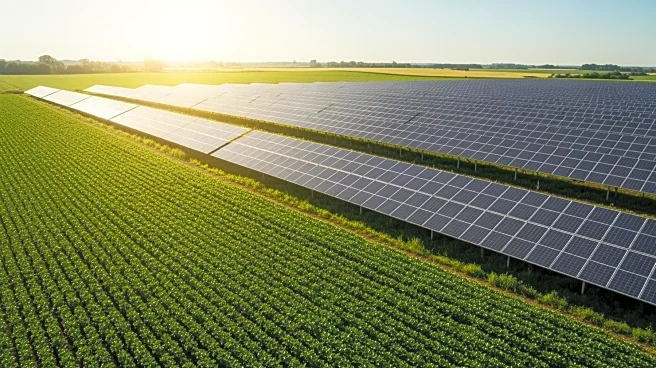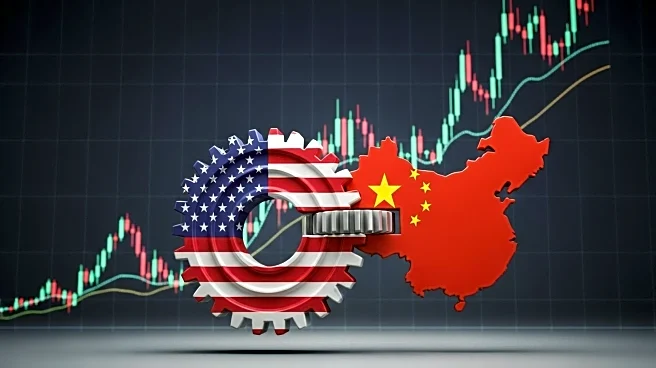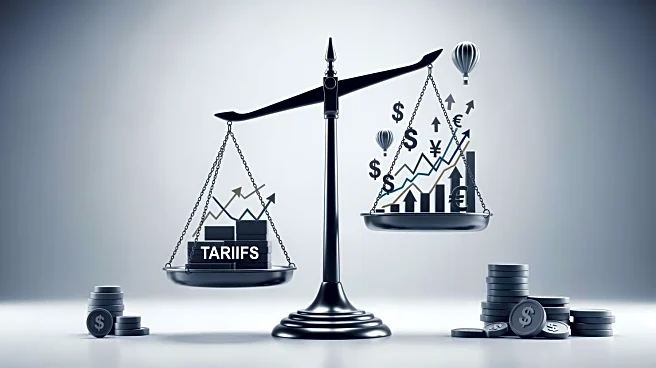What's Happening?
China is advancing its renewable energy strategy by integrating agrivoltaics, a system that combines solar panels with agricultural activities on the same land. This approach is gaining traction globally,
with Chinese solar firm GCL leading the charge. The company has implemented new technologies such as bifacial solar panels, tunable solar panels, elevated racks, and advanced system management to enhance land use efficiency. These innovations are demonstrated in Germany's Tützpatz agrivoltaic project, which spans 93 hectares and utilizes 146,000 bifacial solar modules. The project aims to optimize land use by allowing farming activities between solar panel rows, providing a sustainable solution for marginal lands. This development contrasts with President Trump's fossil fuel-focused policies, which have faced challenges due to tariffs, inflation, and climate impacts.
Why It's Important?
The expansion of agrivoltaics represents a significant shift in global energy strategies, emphasizing sustainability and efficient land use. For U.S. farmers, this model offers a potential lifeline amid economic challenges exacerbated by tariffs and climate impacts. The integration of solar energy with agriculture could provide additional revenue streams, helping to stabilize rural economies. As China continues to innovate and expand its renewable energy capabilities, the U.S. may face increased pressure to adopt similar strategies to remain competitive in the global energy market. The success of agrivoltaics could influence future energy policies and encourage investment in renewable technologies.
What's Next?
China's continued investment in agrivoltaics and renewable energy technologies may prompt other countries, including the U.S., to explore similar initiatives. The potential for agrivoltaics to address land scarcity and energy demands could lead to increased adoption of these systems. In the U.S., state and local projects in Virginia and Detroit are already exploring agrivoltaic opportunities, which could serve as models for broader implementation. As the demand for sustainable energy solutions grows, the U.S. may need to reconsider its energy policies to incorporate more renewable sources, potentially leading to a shift away from fossil fuels.
Beyond the Headlines
The development of agrivoltaics highlights the intersection of technology, agriculture, and energy policy. It raises ethical considerations about land use and the balance between food production and energy generation. The success of these projects could lead to long-term shifts in how countries approach energy sustainability, potentially reducing reliance on fossil fuels and mitigating climate change impacts. Additionally, the integration of advanced technologies like AI in system management could drive further innovation in the renewable energy sector.













